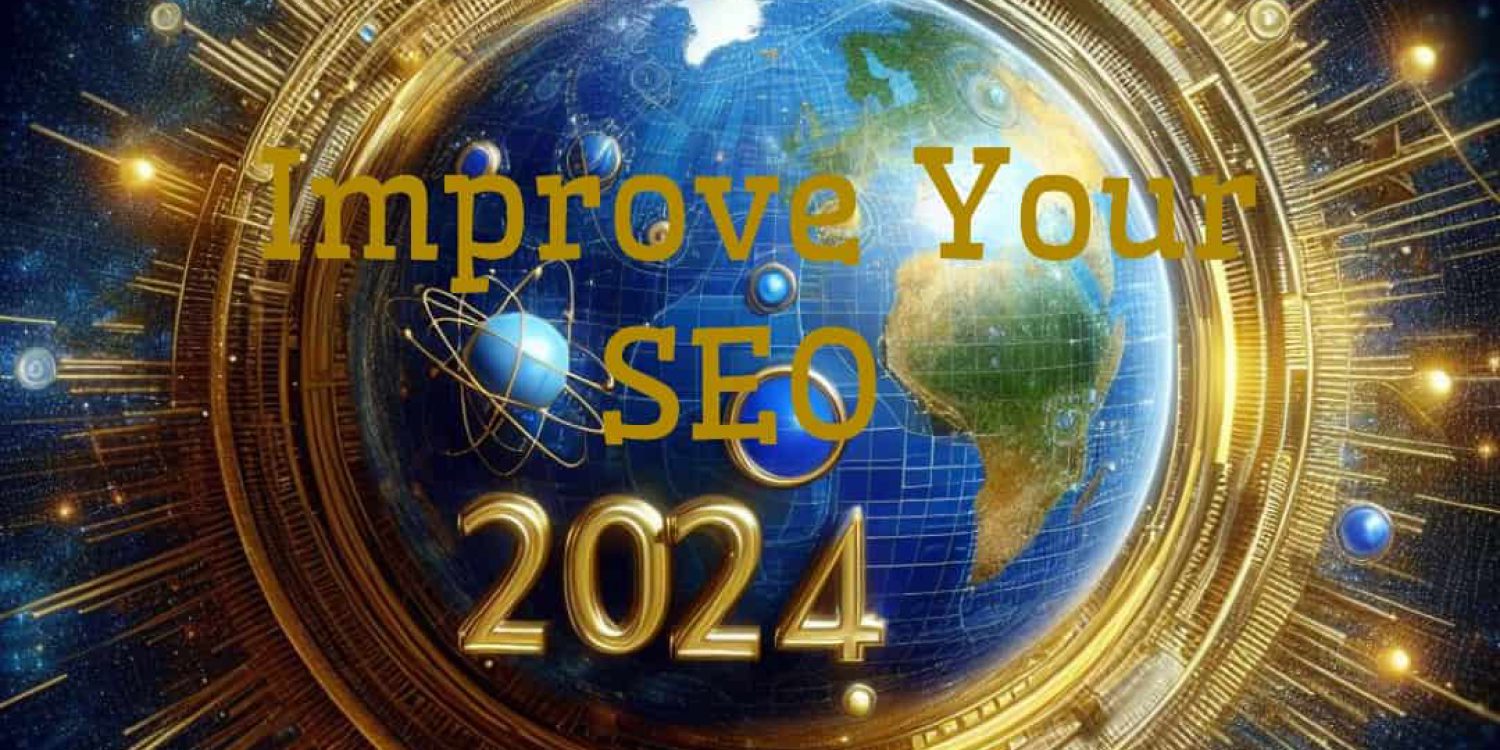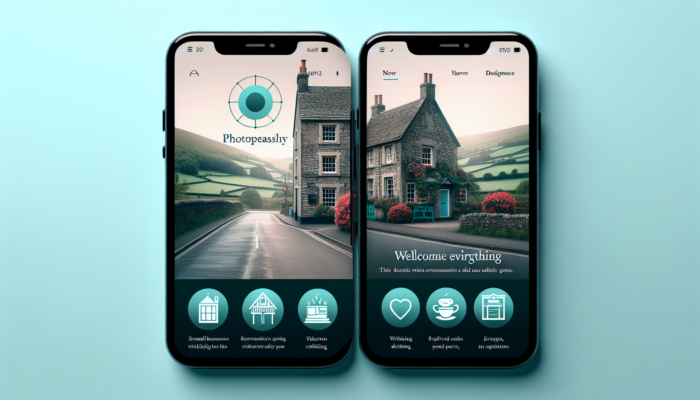Serving 2024 and surrounding areas for over 25 years.
Trusted by local business for reliable website design, SEO services and Digital Marketing in Somerset, Dorset, Devon, Wiltshire and Gloucestershire. 30 years of online marketing experience across the world.
Table of Contents
ToggleOptimization for On-Page SEO
Checklist to Improve Your SEO in 2024: Want your pages to rank high on Google? You won't be able to achieve that if you don't know where or how to begin with on-page SEO – and with each Google update, this pillar of SEO becomes more complicated.
To keep you updated on the best and most relevant practices for this element of your website, I've created an on-page SEO checklist for 2024.
On-page SEO Factors
Simply put, on-page SEO is all about optimising your website for the pages that make up it. When done correctly, tweaking specific components of your sites might cause them to rise swiftly in the rankings. These elements comprise almost everything you see on your website, including title tags, headers and photos.
Identify Your Target keywords.
This is where all SEO efforts should begin. Determine the core keywords for which you want each page to rank.
From there, you may use keyword research to extend into popular phrases, inquiries, and related words that people use to find pages similar to yours.
Key Features of Keyword Optimisation:
Investigating Keywords Locating the appropriate search terms used by your intended audience.
Keyword Placement: Use keywords appropriately in titles, headings, the opening paragraph, and throughout the text.
Searcher Intent is understanding why someone is searching, whether to obtain information, make a purchase, or do something else.
Effective keyword optimisation enables you to develop pages that best match user intent. This increases your chances of ranking high for your target keywords.
High-Quality Content Creation
Quality content is the foundation of on-page SEO. It is, after all, core to Google's selling point: it is the go-to site for answers to your inquiries. This is why Google periodically distributes Helpful Content Updates.
Your material must match Google's quality guidelines to rank at the top. It must also be authoritative, valuable to the reader, and fulfil the promises made in your meta tags and headings.
What Makes Quality Content
Originality: Your work must be distinctive and provide new ideas.
Relevancy: It should be consistent with your target user's intent and updated frequently.
Engagement: Your content should entice consumers to spend time on your website and interact with your services.
Creating content that exceeds user expectations can significantly improve your SEO by directly affecting user engagement metrics and increasing your site's trustworthiness.
URL Structure:
URLs are a ranking component and improve the user experience when structured logically.
Characteristics of an Effective URL Structure:
A URL should be concise and descriptive of your page's content—no stop words.
Term Inclusion: A relevant term can improve a URL's performance.
Use Hyphens Instead of Underscores: Hyphens are commonly used to separate words.
A clean URL helps consumers and search engines understand the page's content before they arrive.
Title Tag and Headings
I find that particular techniques for these two elements impact a page's SEO the most.
Best Practices for Title Tag and Heading Optimisation:
Use a Keyword-First Approach: Place keywords first in your title tag and use as few stop words as feasible.
Keep it Simple: Title tags should be short to ensure the total tag appears in the SERPs.
Same Keyword, Different Phrase: Use the same keyword in the title tag and heading 1. However, use distinct phrasing or vocabulary for each.
Insert Related Keywords: Use this for headings 2, 3, and so forth, wherever it makes sense.
Use different title tags and headings for each page to avoid duplicates.
Meta Tag Enhancement
Meta tags, such as the meta description, provide a brief pitch to users on search engine results pages. Other meta tags, such as your picture alt text and links, provide valuable context for the user and the crawlbot.
Tips for Enhanced Meta Tags:
Compelling Copy: Create title tags and meta descriptions that appropriately summarise the page content and encourage clicks.
Keyword Usage: Use target and related keywords effectively in your meta descriptions while staying inside the restriction.
Each page's meta tags should be unique.
Be Descriptive: Your picture alt text should include a relevant keyword and adequately describe what is shown in the image.
Include internal and external links. Semantic search implies that Google can use the links on your pages to understand their content better.
Always include beneficial internal connections and only external links from reputable websites.
Use the Noindex Robots Meta Tag. This will prevent pages with thin content, little value, and no intent from appearing in the SERPs.
Use: rel=”canonical” Use the Link Tag for any duplicate pages on your website. This allows you to decide which version of the page is indexed and ranked for your chosen keywords.
Set your Open Graph Meta Tags. This will optimise how your pages appear when shared on social media.
Set your Viewport Meta Tag: This determines how your pages are scaled and presented across various devices and platforms, which is critical for user experience.
Take advantage of this step on your on-page SEO checklist to maximise your SEO efforts. Minor adjustments here might add up to a big picture.
Well-written meta tags can raise click-through rates, increase your organic and image search presence, improve user experience, and disperse link equity throughout your sites. All of this contributes to your page's ranking.
Internal Linking
Internal linking helps search engines find new pages and spreads link equity throughout your site. Always provide a link to your website's pillar material or other valuable information.
Advantages of Strategic Internal Linking:
Navigation: They direct viewers to other relevant pages on your website.
Page Authority: Anchor text can help explain what the linked-to page is about, which can help rank for specific keywords.
User Time on Site: Providing relevant connections can keep visitors on your site longer.
Good internal linking can dramatically enhance engagement rates and help to establish a robust site design.
User Experience (UX
User experience influences on-page SEO because search engines prefer websites with excellent user experience.
UX Factors to Consider in Website Design:
Mobile-Friendliness: The site must work well on all devices, particularly mobile-view, as most Google users use their phones.
Ease of Use: The website's layout should be navigable and logical. Navigation bars and other menus should be simple and prioritise the most important sites on your website.
Page Speed: To lower bounce rates, pages should load rapidly.
Sites that provide a superior user experience will dominate search engine results pages.
Mastering this pillar of SEO is critical for getting good Google rankings and staying current with evolving best practices. However, with each update, what works best varies.




















33 Comments
This is a compelling take on the nuances of on-page SEO, and I appreciate the comprehensive checklist you’ve provided for 2024. It really captures the essence of how critical it is to stay ahead of the curve in digital marketing, especially considering the ever-evolving nature of search engine algorithms.
I appreciate the breakdown of on-page SEO here; it really highlights the nuances that can make a significant difference in how pages rank on search engines. I find that the identification of target keywords is truly foundational, yet it’s often overlooked or rushed through. It reminds me of how I approached a recent project where I was trying to boost traffic to my blog. I spent quite a bit of time analyzing not just the primary keywords, but also considering related phrases that potential readers might be using.
I appreciate your insights on on-page SEO, especially given how fast the digital landscape evolves. It’s interesting to see how the search algorithms prioritize different factors over time. For instance, while keyword identification is critical, I find that user experience elements like site speed and mobile optimization have taken on a monumental role in recent updates.
This checklist for on-page SEO in 2024 is a timely reminder of how essential it is to stay aligned with the evolving landscape of search engine optimization. The increasing complexity of Google’s ranking criteria makes a focused approach to on-page elements more critical than ever.
It’s great to hear that you found the checklist helpful. Staying ahead in on-page SEO really is a balancing act, especially with how quickly algorithms change. One aspect worth considering is the importance of user experience alongside technical elements. Content that resonates with users, while also being optimized for search engines, tends to perform best.
Thank you for your kind words! If you’re looking to dive even deeper into these strategies and elevate your SEO game, check out this resource that offers additional insights and tools for success in 2024.
https://ezi.gold/krystal
I really like how you broke down the importance of on-page SEO. It’s easy to overlook those basics when you’re caught up in the whirlwind of off-page strategies. I remember when I started focusing on title tags and headers—seemed like such a small tweak at first, but it made a noticeable difference in my rankings.
You’re spot on about user experience—it really has evolved into a core part of SEO. It’s fascinating how Google keeps pushing for better experiences, making things like site speed and mobile optimization non-negotiable. I’ve noticed that people don’t just expect speed; they demand it. If a site doesn’t load quickly or isn’t responsive, they bounce faster than ever.
I completely agree with you on the importance of staying aligned with the evolving landscape of search engine optimization. As Google continues to refine its algorithms, the way we think about on-page SEO requires a nuanced and thoughtful strategy. It’s fascinating how every update seems to shift the dynamics; small elements like content structure, user experience, and even site speed can dramatically impact rankings.
Your breakdown of on-page SEO for 2024 highlights some crucial aspects that many websites often overlook. One area that I find particularly fascinating is the importance of understanding user intent behind target keywords. Rather than just selecting keywords based on search volume, it’s imperative to consider the context in which users might be searching for those terms. For example, a financial services website targeting “best savings account” needs to delve deeper—are users looking for comparisons, reviews, or specific banks? Tailoring content to match this intent can make a significant difference not just for ranking, but also for user engagement and satisfaction.
You’re spot on about the evolving landscape of SEO. It’s fascinating how rapidly things change. Just when we think we’ve got a handle on Google’s algorithm, they introduce new factors or shift existing ones, leaving us to constantly adapt.
“To help you navigate these changes effectively, check out our comprehensive guide to mastering on-page SEO in 2024!”
https://ezi.gold/emailoctopus
This checklist for on-page SEO is a timely reminder of the importance of keeping up with best practices as we head into 2024. I appreciate how you emphasize the foundational aspect of identifying target keywords, as this forms the bedrock of effective content strategy. I’ve often found that delving deep into keyword research not only helps in clarifying the intended message of web pages but also opens doors to related topics that can enhance content depth.
It’s great to hear your thoughts on the significance of on-page SEO and the role of keyword identification. You’re spot on about how often that foundational step gets rushed. Many people dive straight into optimization without taking the time to really understand their audience’s search behavior. It sounds like your approach with your blog was very strategic, focusing not just on primary keywords but also on the related phrases potential readers might use. That depth of analysis can really pay off in attracting the right audience.
“I’m glad you found the breakdown helpful! If you’re interested in diving deeper into effective keyword strategies, you might find this resource valuable for your blog traffic efforts.”
https://ezi.gold/trustindex
Your breakdown of on-page SEO really resonates with me, especially as we gear up for 2024. I’ve been diving into the intricacies of SEO for a while now, and I can’t help but feel the pressure as Google continues to evolve its algorithms. It’s like trying to hit a moving target, right?
You bring up an excellent point about the need to stay aligned with the evolving landscape of search engine optimization. The way Google adjusts its algorithms often feels like a dance that never quite stays the same; there’s always a new step to learn or a rhythm to adapt to. As a result, focusing on on-page elements is not only important but also a bit of a balancing act.
“Absolutely! If you’re looking to dive deeper into mastering these on-page strategies, check out our comprehensive guide for the latest tips and insights.”
https://ezi.gold/emailoctopus
It’s interesting how you highlighted the often-overlooked aspect of target keywords. In my experience, spending that extra time delving into related phrases can genuinely pay off. For instance, when I was working on a project focused on healthy eating, I found that incorporating long-tail keywords related to meal planning and specific dietary preferences like “vegan meal prep for beginners” really resonated with the audience.
You’re hitting on a key point with user intent. It’s so true that understanding what individuals want when they search can really change the game. When someone types in “best savings account,” they might be on a journey for a quick comparison, deep dives into reviews, or even specific offers from a bank.
I’m glad you found the checklist useful! The way search engine algorithms evolve is like a dance that keeps changing steps; staying in sync is crucial. One thing that’s really intriguing is how user experience is increasingly influencing SEO. It’s not just about keywords or backlinks anymore; it’s about delivering a genuinely helpful experience to visitors. Site speed, mobile optimization, and even how engaging your content is can all play a massive role in your rankings.
Thank you for your kind words! If you’re looking for more insights to stay ahead in digital marketing, check out our latest resources to enhance your SEO strategies.
https://ezi.gold/emailoctopus
You’ve touched on a really important aspect of SEO that can easily get overshadowed by other tactics. Identifying target keywords is definitely foundational, yet it often gets a rushed treatment. Your approach to analyzing related phrases is spot on. It can open up a whole new range of opportunities for attracting the right audience to your blog.
Your breakdown of the on-page SEO elements is both clear and timely, especially as we look ahead into 2024. The increasing complexity of Google’s algorithms undoubtedly presents a challenge, yet it also opens up exciting opportunities for those who are willing to adapt and refine their strategies.
This checklist really emphasizes the foundational elements of effective on-page SEO, which I think often get overlooked! I’ve found that understanding the nuances of title tags and headers can make a surprising difference in a page’s performance.
You’ve touched on a really important aspect of SEO that can easily get overshadowed by other tactics. I agree that keyword identification is foundational but often gets brushed aside in favor of flashier strategies like link building or social media engagement. It’s easy to see why, especially with ever-changing algorithms making it feel like we’re chasing the latest trend.
You really captured the essence of the constant change in SEO. It does feel like a dance at times—trying to keep up with Google’s updates is certainly a challenge. I’ve noticed that while mastering on-page elements is crucial, the context around them, such as user intent and content relevance, seems to be taking center stage these days.
I’ve found the evolving nature of on-page SEO to be both a challenge and an exciting opportunity. It’s interesting how Google constantly updates its algorithms, often leaving many of us scrambling to adjust our strategies. Your checklist for 2024 is a timely reminder of just how foundational these elements are, starting with keyword research.
You’ve hit on some key points there. The way search engine algorithms evolve really keeps us on our toes, doesn’t it? It’s like trying to hit a moving target. Content structure and user experience have become super important—Google seems to be prioritizing how real users interact with sites more than ever.
“Absolutely! Staying ahead of these changes is crucial. For a deeper dive into effective strategies that can help you adapt to these shifts, check out this insightful resource.”
https://ezi.gold/emailoctopus
It’s refreshing to see someone recognize the importance of keyword identification in the broad landscape of SEO. You’re right; with all the shiny, new strategies grabbing our attention, it’s easy to overlook the foundational elements that lay the groundwork for everything else we do in this field.
“I completely agree! To dive deeper into effective keyword strategies and ensure you’re staying ahead in the SEO game, check out this insightful guide.”
https://ezi.gold/backlinks
You’re absolutely right about the importance of identifying target keywords. It’s like laying a solid foundation for a house—without it, everything else might crumble down the line. Many people rush this part of the process, thinking that just picking a few popular keywords is enough. But there’s so much more to this puzzle.
Absolutely, it’s all about digging deeper! If you’re interested in learning more strategies for effective keyword research, check out this helpful resource.
https://ezi.gold/toolbox
The ever-shifting landscape of search engine optimization is something that many of us feel acutely, isn’t it? Your point about staying aligned with Google’s evolving ranking criteria resonates strongly. As we dive deeper into 2024, it’s clear that a nuanced understanding of on-page SEO can really set us apart in a crowded digital space.
You bring up a really important point about keyword identification. It’s fascinating how the foundation of SEO can get overshadowed by the more dazzling tactics. I’ve found that the trend to prioritize flashy strategies often leads to a somewhat superficial understanding of what truly drives traffic in the long run.
You bring up a great point about the balance between user experience and technical SEO. It’s interesting how user engagement metrics, like time on page and bounce rate, have become vital for search rankings. It seems like Google’s algorithms are increasingly prioritizing genuine user interactions, which makes sense; after all, people come to the web looking for meaningful content.
You’ve captured the essence of the challenge quite well. It’s definitely a balancing act trying to keep up with how quickly things change in SEO. The way Google emphasizes user experience really reflects a broader trend in technology—companies are increasingly focusing on genuine interaction rather than just metrics.
I found an interesting resource that offers practical tips on crafting content that not only resonates with users but also attracts those valuable backlinks, which is essential given the ever-changing search landscape.
‘Create Link-Worthy Content for Organic Backlinks’
https://ezi.gold/create-link-worthy-content-for-organic-backlinks/.
It’s interesting how those seemingly small tweaks can really shift the whole picture, isn’t it? When I first delved into SEO, I had the same experience with title tags and headers. They felt almost like an afterthought compared to more glamorous strategies, but I quickly realized that they play a foundational role in how search engines interpret content.
I appreciate your breakdown of on-page SEO—it’s such a crucial yet often overlooked aspect of digital marketing. As someone who has navigated the shifting landscape of SEO over the years, I can vouch for how essential it is to stay current with practices that align with Google’s updates.
It’s interesting how those seemingly small details can have such a big impact, isn’t it? Focusing on title tags and headers isn’t just about checking off a box; it’s like laying a solid foundation for your content. When you think about it, those elements are often the first things both search engines and users see. If they don’t grab attention or provide clarity right away, you could lose out on potential traffic.
“I’m glad to hear that you found my breakdown helpful! Small tweaks can indeed lead to big changes. If you’re interested in diving deeper into on-page strategies, check out this resource for more insights!”
https://ezi.gold/backlinks